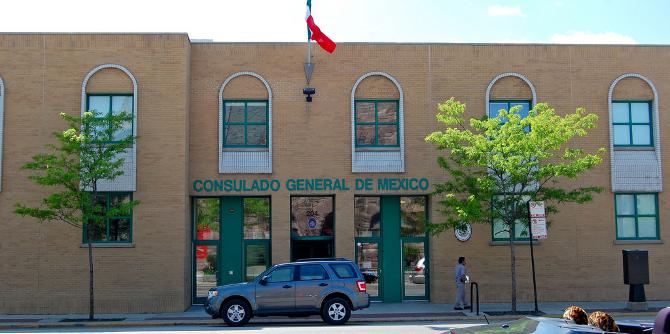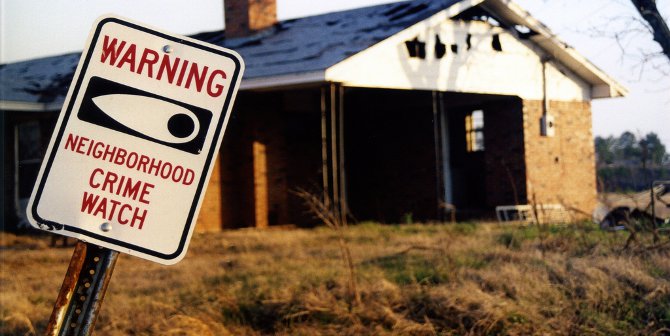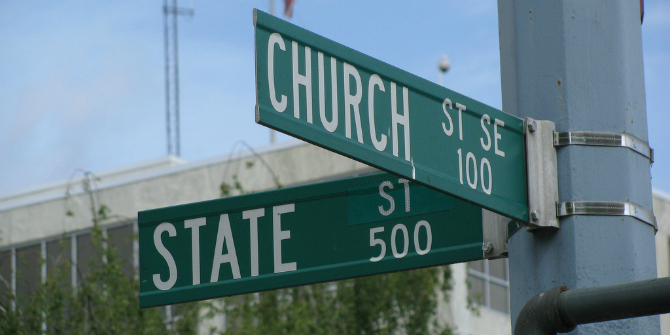
 Previous academic studies have found that in the wake of gun violence communities are more likely to vote for Democratic candidates, while others have found no effect at all. In new research, Hans Hassell and John Holbein use an analysis model which accounts for existing electoral trends in specific areas, finding that mass shootings have no substantial effects on election results.
Previous academic studies have found that in the wake of gun violence communities are more likely to vote for Democratic candidates, while others have found no effect at all. In new research, Hans Hassell and John Holbein use an analysis model which accounts for existing electoral trends in specific areas, finding that mass shootings have no substantial effects on election results.
Gun violence in the United States has a devastating impact on the communities where it occurs. Understandably, researchers have been interested in understanding how tragic events, in particular school shootings and mass shootings, affect voters and the choices they make. Specifically, researchers have been interested in whether these tragedies change how individuals vote in the communities where these events occur. This is an important question because it relates directly to democratic accountability—that is, the ability for citizens to hold policymakers (including elected officials) accountable for their actions. In this case, we might expect voters to recognize the role policymakers have to implement policies that could prevent such tragedies and to vote for candidates from parties advocating for policies aimed at reducing gun violence.
What is surprising is that despite using similar data and designs, the various studies examining this question have come to very different conclusions. Some of this work has found that mass shootings have sizeable electoral effects—fundamentally changing who citizens vote for. This work has found that Democrats make large gains at the polls in the local area in the wake of such incidents. In stark contrast, other work has found no substantive effect at all.
Explaining differences in the estimated effects of gun violence on voting
The purpose of our new research was to understand what explains these stark differences in estimated effects and to attempt to reconcile three particular findings. Our conclusion is that these tragic events do not influence party vote shares. In our work we show that previous research that has documented large effects of gun violence on electoral outcomes does so because it fails to account for the fact that shootings are more likely to happen in areas that are trending Democratic before shootings happened. Once we account for different trends in different areas, there is no evidence for large electoral change and very limited evidence for any smaller effects (either positive or negative) on Democratic vote share.
Previous work has attributed differences between different studies to small variations in what these studies measure as a shooting with the idea that only certain types of shootings (in particular “rampage” shootings which include only shootings where there is indiscriminate selection of some of the victims and there is not a political or criminal motive) might be more traumatic and influential. We show instead that the differences in these estimated effects are the result of the specific models researchers chose to use.
As you can see in Figure 1 below—which plots effect sizes as points and confidence intervals shown as bars—using the same models that scholars who have found large effects use, we show that it does not matter how shootings are coded. These models are two-way fixed effects models (TWFE) where vote share is regressed on the presence of a shooting with fixed effects for time and location (counties). These models suggest that mass shootings increase democratic vote share in the areas surrounding the shooting by six to nine percentage points—a sizable amount.
Figure 1 – Differences in previous studies’ estimated effect of mass shootings on election outcomes are not driven by data choices

These models, however, do not account for the assumption that without the presence of a mass shooting, the average electoral outcomes for groups that had and had not experienced such an event would have followed similar trend patterns.
Better models of the effects of gun violence
We then turn to what researchers should do to evaluate whether the effects in a two-way fixed effects model are causal and robust. Simple models can be problematic if there are violations of the parallel-trends assumption or differences in treatment effects over time.

Photo by Chip Vincent on Unsplash
To check for the first potential problem, researchers can look for patterns in aggregate-level data to see whether, prior to the change being examined – in this case, gun violence – the areas being compared are trending in different directions. Figure 2 examines electoral trends between counties; Panel (a), contains counties with a shooting excluding all observations after the event, and Panel (b) contains all counties without shootings. As Figure 2 shows, shootings tend to happen in communities—proceeding and unrelated to shootings themselves— which are trending more Democratic relative to other areas.
Figure 2 – Trends in presidential vote in counties with mass shootings prior to shootings, compared to trends in counties without shootings

In addition, we suggest scholars should change the way they conduct their analysis to investigate whether their models suggest effects prior to the events they are examining. These tests are informative as shootings should not affect vote shares prior to their outcome as they are unanticipated events. In both cases, we find that shootings have a significant and substantive effect on Democratic vote shares up to 20 years prior to a shooting and we see Democratic under-performance increasing in elections prior to shootings.
Because previous work finding large effects of gun violence on local electoral outcomes violates crucial assumptions which underlie the model these researchers use, we use a variety of recently developed methodological tools to estimate models that do not rely on the same assumptions. When we do that, the effects of mass shootings are all much smaller, and virtually all of them are not statistically significant. Figure 3 below shows this. In contrast to Figure 1, where the effects are large and statistically significant, the effects once we make our adjustments are not significant or substantively meaningful.
Figure 3 – Effects of mass shootings on elections after absorbing county-specific trends

Although there has been some debate about the effect of gun violence on electoral outcomes, our work shows that these differences are not due to differences in what is classified as a shooting and what theoretically might or might not influence voters. Instead, we show that past research which finds large effects of gun violence is the result of a failure in the analysis model used. Our work helps to provide a guide that others can use as an example when using difference-in-differences designs in other research applications.
Ultimately, what our research doesn’t answer is the question of why gun violence fails to spark electoral change in the United States. It’s possible that we’re all so worn out from the sheer number of mass shootings we experience that we’ve become desensitized to these acts of violence. However, we cannot be sure. What we can be sure of is that mass shootings appear to have little to no effect on election outcomes in the United States.
- This article is based on the paper, ‘Navigating Potential Pitfalls in Difference-in-Differences Designs: Reconciling Conflicting Findings on Mass Shootings’ Effect on Electoral Outcomes’ in American Political Science Review.
- Please read our comments policy before commenting.
- Note: This article gives the views of the author, and not the position of USAPP – American Politics and Policy, nor the London School of Economics.
- Shortened URL for this post: https://wp.me/p3I2YF-dWC






